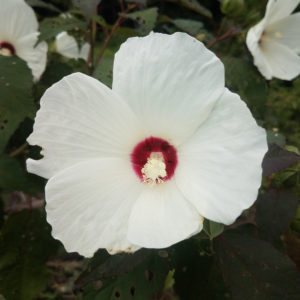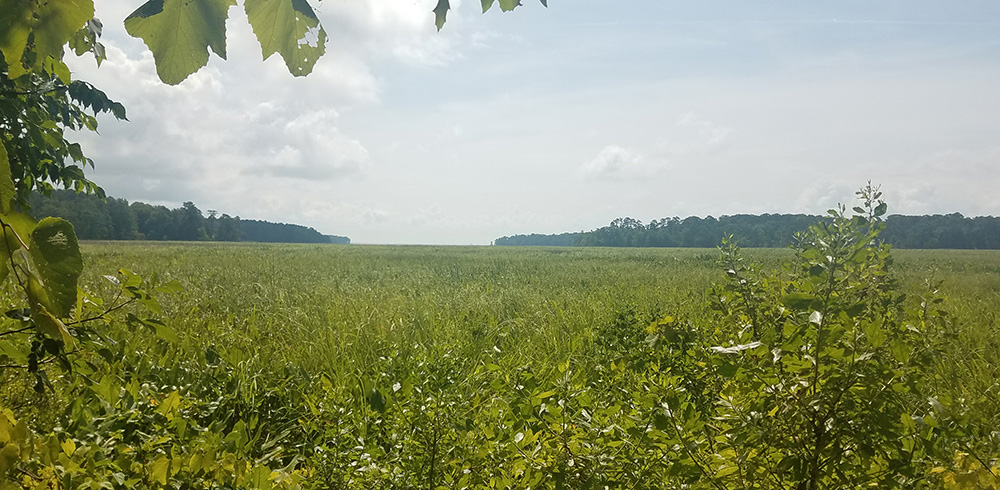 Marshes, like most other habitats, are best described by the plants that live in them. Differing conditions, such as the fluctuation of salinity and temperature, can allow for varied species to colonize areas. The marshes of Hampton Roads are home to many unique plants that support an entire array of fascinating native animals!
Marshes, like most other habitats, are best described by the plants that live in them. Differing conditions, such as the fluctuation of salinity and temperature, can allow for varied species to colonize areas. The marshes of Hampton Roads are home to many unique plants that support an entire array of fascinating native animals!
Wild rice, (Zizania aquatic), is found in freshwater and slightly brackish marshes in the Hampton Roads as well as much of the United States and Canada. This grass produces tall stalks with filamentous male flowers and robust seeds, rice! It was harvested by local Native American tribes and farmed by European Colonists in paddies. The seeds that humans find so delicious, and is a staple all over the world, is used by migrating birds as a much-needed source of energy during their arduous journey south in the autumn. As an annual, the individual plant dies at the end of the growing season. But by spending so much energy on generating seeds, it ensures that many more wild rice will take its place in the following spring.
Swamp-rose mallow, (Hibiscus moscheutos), is a flowering bush that is at home in both salt and freshwater marshes. And as the genus name implies, it is one of many plants in the beautiful hibiscus family. As a resident of the high marsh, swamp-rose mallow can tolerate periodic inundation from tides or flooding, but can’t endure prolonged periods underwater. Many species of pollinators, such as ruby-throated hummingbirds, Eastern tiger swallow-tails, and gray hairstreaks, make use of its many large and gorgeous flowers. In the winter, seedpods feed waterfowl that have come all the way from the far north of Canada!
Want to see these native plants and more like them? Be sure to register for a guided paddle with “Connect with the James” led by James River Association Staff!

